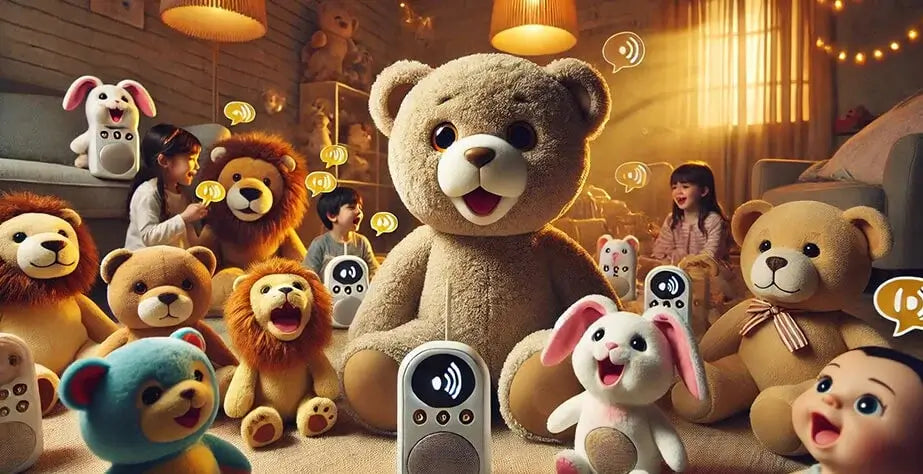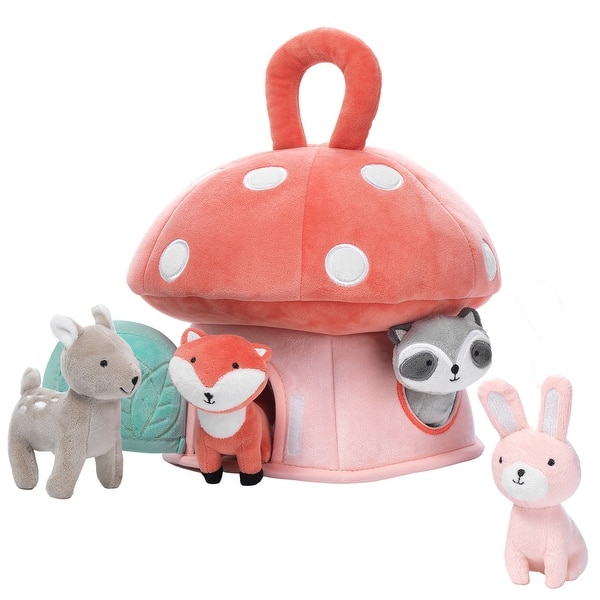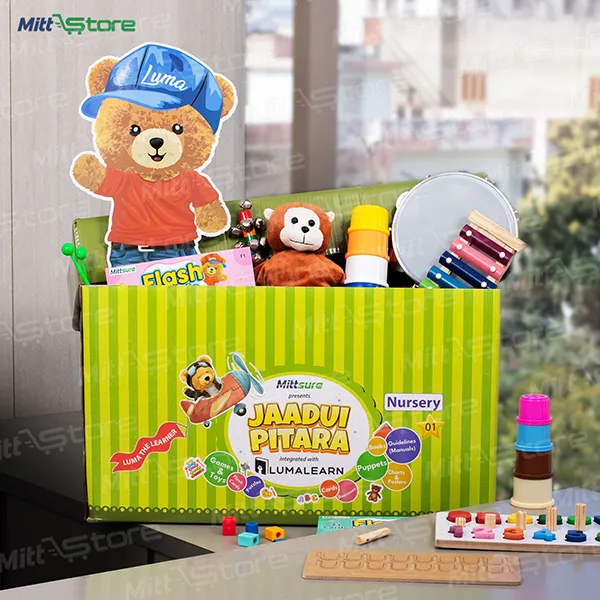
The Huggable Revolution: Deconstructing the Technology and Trends in AI Plush Toys
The Dawn of the Sentient Snuggle: AI’s Grand Entrance into the World of Plush Toys
For generations, the plush toy has been a silent confidant, a steadfast companion in a child’s world of imagination. From well-worn teddy bears to vibrant stuffed characters, their value has been in the stories we project onto them. However, a technological revolution is quietly unfolding within the very fabric of these cherished playthings. The latest AI Plush Toy News isn’t just about softer fur or brighter colors; it’s about embedding intelligence, personality, and interactivity into the heart of the toy chest. This fusion of artificial intelligence and soft robotics is transforming passive pals into active participants in play, learning, and development. The rise of the smart toy is no longer a futuristic concept but a burgeoning market, with innovations in natural language processing, sensor technology, and machine learning creating a new category of “plushie companions.” This article delves into the technical architecture, developmental impact, and ethical considerations of this huggable revolution, exploring the trends and innovations that are shaping the future of play.
Section 1: From Stuffed to Smart: The Technological Evolution of the AI Plush Toy
The journey from a simple stuffed animal to an AI-powered companion is a story of miniaturization, connectivity, and sophisticated software. While early “interactive” toys relied on pre-recorded phrases triggered by a button press, today’s smart toys are complex computational devices. The latest Smart Toy News highlights a convergence of several key technologies that form the foundation of this new generation of play.
Core Technological Pillars
Understanding the modern AI plush toy requires looking at its three primary components: the “brain,” the “senses,” and the “voice.”
- The Brain (Processing Unit & AI Models): At the core of every smart toy is a microprocessor, often a low-power System on a Chip (SoC) similar to those found in smart home devices. This hardware runs the toy’s operating system and, crucially, its AI models. Early models relied heavily on cloud processing, sending voice data to remote servers for analysis. However, driven by privacy concerns and the need for faster response times, the trend is shifting towards on-device (edge) AI. This involves using lightweight, optimized machine learning models for tasks like keyword spotting and basic intent recognition directly on the toy. More complex conversational AI, often powered by specialized Large Language Models (LLMs) trained on child-safe datasets, may still use a hybrid cloud approach. This is a central topic in Toy AI Platform News, as companies compete to offer the most secure and responsive platform for developers.
- The Senses (Sensor Integration): An AI toy’s ability to perceive its environment is what makes it feel alive. The latest AI Toy Sensors News reveals an increasingly sophisticated array of inputs. High-fidelity microphones with noise-cancellation are standard for voice commands, making Voice-Enabled Toy News a constant stream of innovation. Accelerometers and gyroscopes detect motion, allowing the toy to know if it’s being hugged, tossed, or turned upside down. Capacitive touch sensors embedded beneath the fabric respond to pets and squeezes, while some high-end prototypes featured in AI Toy Prototypes News even include simple cameras for facial and object recognition, enabling a toy to “see” its owner.
- The Voice & Body (Output Mechanisms): The output is just as important as the input. High-quality speakers deliver clear, friendly voices. But the real magic lies in the physical response. Small servo motors and actuators, a topic often covered in Robot Toy News, allow for subtle movements—a head tilt, an ear wiggle, or even expressive light patterns from embedded LEDs. This combination of sensory input and physical output creates a feedback loop that fosters a believable and engaging interaction for the child.
Section 2: The Anatomy of Interaction: A Deep Dive into AI Toy Functionality
The true innovation in AI plush toys lies not just in the hardware but in the software that orchestrates the interaction. This ecosystem extends beyond the toy itself, often involving companion apps, cloud services, and ongoing content updates. The design and integration of these elements determine whether a toy is a fleeting novelty or a long-term companion.

The Software Ecosystem and Learning Capabilities
The most successful AI toys are more than just standalone devices; they are platforms for play and learning. This is where we see a blend of different toy categories, from AI Storytelling Toy News to Programmable Toy News.
Case Study: “Cosmo the Coding Cub”
Let’s imagine a hypothetical AI plush bear named Cosmo. Cosmo’s functionality provides a concrete example of this integrated ecosystem:
- Conversational AI: When a child asks, “Cosmo, can you tell me a story about stars?” the toy’s microphone captures the audio. An on-device keyword spotter recognizes the wake word “Cosmo.” The rest of the query is securely sent to a cloud-based Natural Language Processing (NLP) engine. This engine, trained on a curated, child-safe dataset, interprets the request and generates a unique, age-appropriate story about astronomy. This dynamic content generation is a major focus of AI Learning Toy News.
- App Integration and Customization: Through a parent-controlled tablet app, a core topic in AI Toy App Integration News, a child can engage in coding activities. They might use a simple drag-and-drop block interface to program Cosmo’s reactions. For example, “IF patted on head, THEN giggle and light up blue.” This introduces fundamental logic and coding concepts, placing Cosmo in the realm of Coding Toy News and STEM Toy News. The app also allows for AI Toy Customization News, letting parents set vocabulary levels, define “off-limits” topics, and review interaction logs.
- Adaptive Learning: Over time, Cosmo’s AI platform tracks the child’s interests. If the child frequently asks about animals, the toy might proactively suggest a game about jungle sounds or tell a story featuring their favorite creature. This personalization is a key trend in Educational Robot News and turns the toy into a tailored learning companion, touching upon AI Language Toy News if it helps with vocabulary or a new language.
- Firmware and Content Updates: Like any smart device, Cosmo receives over-the-air (OTA) updates. These updates, a constant theme in AI Toy Updates News, can introduce new stories, games, skills, and security patches, ensuring the toy evolves with the child and remains safe from vulnerabilities.
This multi-layered approach—combining conversational AI, educational content, app-based programming, and continuous updates—is what defines the cutting edge of the industry. It’s a fusion of an AI Companion Toy News story with the practical application of a Robot Kit News project.
Section 3: The Broader Implications: Education, Ethics, and the Future of Play
The integration of AI into plush toys has profound implications that extend far beyond the playroom. It is reshaping educational paradigms, creating new categories of companionship, and forcing a critical conversation about privacy and ethics. The discourse around AI Toy Ethics News and AI Toy Safety News is becoming just as important as the technological advancements themselves.
Education and Development Reimagined

The most significant positive impact is in the realm of education. AI toys are becoming powerful tools for personalized learning.
- STEM and Logic Skills: Toys that incorporate block-based coding or simple programming logic, like the hypothetical Cosmo, demystify technology. They make abstract concepts tangible, aligning with trends in Smart Construction Toy News and Robot Building Block News where physical action reinforces digital learning.
- Social-Emotional Learning (SEL): For some children, an AI Plushie Companion News feature can be a tool for practicing social skills. These toys can be programmed to model empathetic responses, guide children through breathing exercises for anxiety, or role-play social scenarios in a safe, non-judgmental environment. This is a burgeoning area of AI Toy Research News.
- Creative Expression: The next wave of innovation, highlighted in AI Art Toy News and AI Musical Toy News, involves toys that can co-create with a child. An AI Drawing Toy News feature might involve a toy suggesting ideas or a plush companion that can generate a simple musical harmony to accompany a child’s singing.
The Critical Conversation: Safety, Privacy, and Ethics
With great capability comes great responsibility. The data collected by smart toys—from voice recordings to play patterns—is incredibly sensitive. This has made AI Toy Safety News a paramount concern for parents, regulators, and developers.
Common Pitfalls and Best Practices:
- Data Security Pitfall: Weak encryption or insecure cloud storage can lead to data breaches, exposing children’s private conversations.
- Best Practice: Developers must implement end-to-end encryption for all data, both in transit and at rest. On-device processing should be prioritized wherever possible to minimize data transmission.
- Privacy Pitfall: Vague privacy policies that allow companies to use children’s data for marketing or other secondary purposes.
- Best Practice: Companies must provide clear, easy-to-understand privacy policies. Parents should have granular control over what data is collected and the ability to delete it at any time, a key demand seen in AI Toy Reviews News.
- Developmental Pitfall: Creating a toy that is *too* engaging, potentially hindering a child’s development of independent, imaginative play or their interaction with human peers.
- Best Practice: AI Toy Design News increasingly focuses on “scaffolding” play rather than directing it. The toy should be a catalyst for imagination, not a replacement for it. Features should encourage open-ended, creative interaction.
Section 4: Recommendations and Future Outlook

As the AI toy market matures, both consumers and creators must navigate this new landscape with informed perspectives. From the latest AI Toy Startup News to established AI Toy Brand News, the principles of responsible innovation are key.
For Parents and Consumers:
- Do Your Research: Look beyond the marketing. Read detailed reviews from trusted sources that specifically address privacy and security features. Pay attention to AI Toy Community News and parent forums for real-world feedback.
- Understand the Data: Before purchasing, review the toy’s privacy policy. What data does it collect? Where is it stored? Who has access to it? Choose brands that are transparent and prioritize privacy.
- Balance the Play: An AI toy should be one of many tools in a child’s developmental toolkit. Encourage a healthy balance of screen time, interactive toy time, and traditional, unstructured play.
For Developers and the Industry:
- Adopt a “Safety-by-Design” Approach: Security and privacy should not be afterthoughts. They must be integral to the product development lifecycle, from the initial AI Toy Future Concepts to the final product.
- Foster Transparency: Be upfront about your toy’s capabilities and data practices. Building trust with parents is essential for long-term success. The best AI Toy Collaboration News often involves partnerships with child development experts and cybersecurity firms.
- Innovate Responsibly: The goal should be to augment, not replace, traditional play. Focus on creating tools that empower children’s creativity, curiosity, and social development. The future lies in creating smarter, more empathetic, and fundamentally safe companions.
Conclusion: The Future is Soft, Smart, and Listening
The world of plush toys is undergoing its most significant transformation in a century. The integration of artificial intelligence is elevating these simple comfort objects into dynamic, interactive companions capable of educating, entertaining, and adapting to a child’s needs. The latest AI Toy Trends News points towards a future of even more seamless and intuitive interactions, where toys become valuable partners in learning and development. However, this exciting future is predicated on a foundation of trust. The long-term success of the AI toy revolution will depend not only on the sophistication of the technology but on the industry’s unwavering commitment to the safety, privacy, and well-being of its youngest users. As we move forward, the most important innovations will be those that pair computational power with a deep, ethical understanding of the nature of childhood and play.



